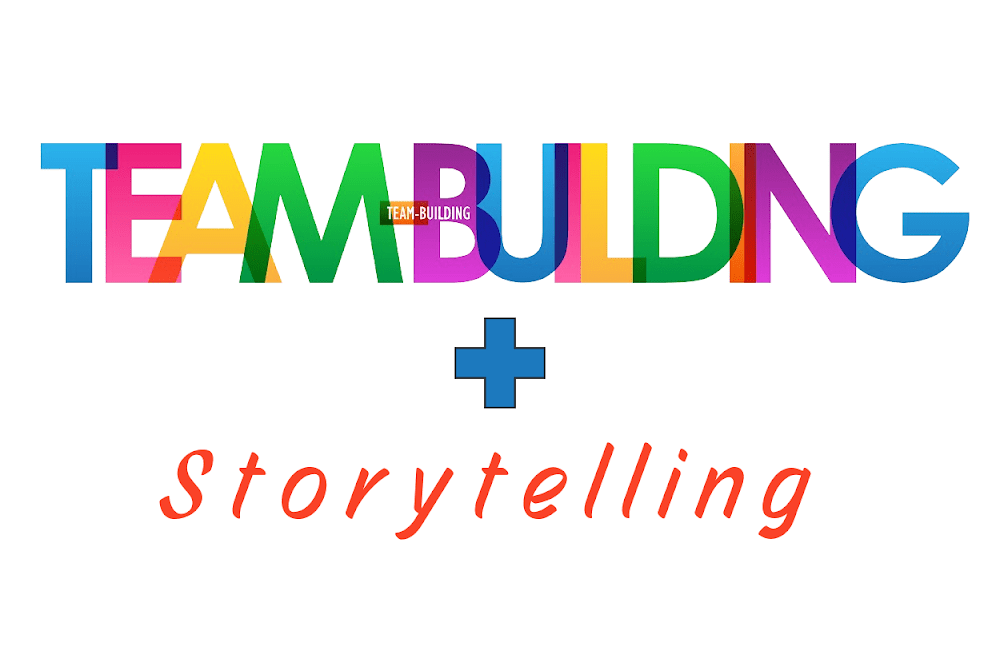Why is Team Building Important?
The phrase “team building” is tossed around a lot in business settings. If you’ve been in business a long time, the phrase may not carry any meaning for you anymore. All the same, if you’re in a leadership role, you’re probably well aware of the reasons why team building is important, even if the term itself can feel a little nebulous.
At Narativ, we believe that great leadership—whether it’s in sales, executive training, onboarding, or team building—is rooted in storytelling. Not only is storytelling a fast-track to effective team building, but if properly applied, story training can also provide a huge boost to job satisfaction and employee retention in your workplace.
This comprehensive guide focuses on team building through storytelling and addresses why story training will do better for strengthening your team than all the trust falls and weekend retreats in the world.
An Introduction to Team Building through Storytelling
Throughout history, humans have connected with one another using stories. These stories served to teach lessons, deliver warnings, and connect people to past generations. For this reason, the most natural way to guide people to connect—with each other, with their jobs, or with their leaders—is through the sharing of stories.
But why bother investing in this sort of connection? Why is team building important in the first place? There has been ample research proving that effective team building is a solution to many of the major problems a company might be facing in terms of growth, productivity, and retention. Here are the ways storytelling will concretely improve the culture and general outcomes for your company.
Bridging Gaps
One of the most persistent problems companies face—which has grown especially dire over the course of the pandemic—is that employees, especially those in remote or hybrid roles, are feeling increasingly disconnected from their jobs and their work culture. This was already a growing problem when everybody was closed off in cubicles all day, but it became nearly universal in 2020 when most people only ever spoke to their coworkers once a week over Zoom. In many ways, office culture has not yet begun to recover from this division.
This challenge requires a solution a bit bigger than just a return to the office. One psychological side effect of the pandemic has been that it is a lot more difficult for people to form natural connections—even after they return to seeing one another in the break room every day. To reestablish a functional team culture, connections will need to be facilitated, which is most easily and naturally accomplished with stories.
The most direct method of introducing story-based connection to the workplace is with one of Narativ’s story trainings, which are designed to guide your entire workforce through the process of crafting and sharing personal stories. However, there are plenty of ways to introduce storytelling into your team building experience, even without a dedicated training.
One simple way to start is to encourage a return to chats around the water cooler with scheduled daily or weekly “coffee breaks” where team members can catch up, share what they are working on, and discover what they may have in common with one another. Conversation can be kicked off by a leader sharing stories from their own life and encouraging team members to share once the ice is broken a little. We’ve worked with clients to create curated conversations around topics that relate to the whole workforce, such as DEIA (diversity, equity, inclusion, and access), culture, values, mission or vision statements. These informal conversations are created as a safe space in which it’s possible for people to be listened to in a dedicated way, outside of the rush of deadline-oriented hours.
Other means of story sharing can come from spotlighting a different employee each week to celebrate ways their work has contributed to various company successes, as well as inviting them to share about their lives and interests during their spotlight. Company leaders can share stories about why the company is meaningful to them, further forging connections by helping employees at every level understand why their work is important.
Even these small changes can help the members of your team become more visible to one another, setting in motion the strengthening of workplace connections that are a vital component of job satisfaction.
Cultivate Tribe-Like Trust
Stories do much more than simply build bridges. If you are wondering how to build trust in a team, consider the way societies have operated for millenia.
The deepest levels of trust and teamwork exist when a person sees the people they are working with as relatable. Humans will naturally collaborate better, resolve conflicts more patiently, and more consistently go to bat for those who they consider a part of their tribe. Stories are one of the oldest and most effective methods of tribal bonding, and so if the sharing of personal stories is widely facilitated in the workplace, employees will quickly begin to see their coworkers as part of their “tribe.”
A workforce that is bonded in this way not only tackles the issue of isolation so many people are feeling these days, but it will also naturally help to overcome employees’ inclination to avoid asking one another for help or keeping workplace issues to themselves rather than talking them out and resolving them. A team that knows they can speak to and rely on one another is far more productive. If they can swap jokes and stories, then they know they can also turn to one another to ask a quick question or collaborate on a project without worrying the other person will drop the ball.
Employee retention heavily relies on eliminating isolation, ensuring all employees feel a part of the group, and creating an environment where employees feel they are among friends.
Making the Work Personal
While interpersonal connection in the workplace is a large factor in employee retention, something that has perhaps an even greater impact on whether someone will stick with a company long-term is whether they feel a meaningful connection to the work they are doing.
People spend their entire lives looking for a sense of purpose, and if they can’t find any of that purpose in their work they will eventually move on, no matter how friendly they are with their coworkers. The best way to create a workplace where people want to stay for years and years is to ensure the mission of the company holds some personal meaning for each employee.
There are a number of ways to facilitate this, starting from the very top of the company and working through every level of employees and even the customers. First and foremost, if the company has a brand story that is genuine and rooted in the human experience of the founder then it will be far easier for everyone else involved in the company to forge their own personal connection with the company’s mission.
In addition, though, it’s important for each employee to be able to recognize the reasons why their specific job is meaningful. It can be easy for people, especially those with roles in warehouses and call centers to feel disconnected from the direct mission of the company and to quickly become disillusioned. This doesn’t need to be the case. Every level of a company has an impact on the final product or service, and there are stories of that impact to be found everywhere.
One story Narativ CEO Jerome Deroy likes to share is from a training he did with members of the customer service department of a healthcare company. The man sharing his experience largely dealt with complaints or mundane basic issues, but on one occasion he received a call from a woman who said her husband refused to use the CPAP machine the company had provided him. The man asked to speak with her husband and was able to use their mutual interest in football to connect with the man and share a story about a famous football player who passed away due to complications of sleep apnea. This connection helped the man to overcome the worries he’d had about using the device and commit to using it to preserve his own health. The story of this experience not only helped the employee feel a sense of connection to a job that can sometimes feel dull or frustrating, but it also helped his coworkers feel a sense of the impact that their own positions might have on the people they serve.
Sharing positive customer reviews is also a great way to show employees their impact. Hearing stories directly from customers about how helpful the product or service has been for them can make it far more clear to employees why their job matters—no matter how disconnected it may feel—which can make all the difference when they are deciding whether to stay or go.
Develop Effective Leadership
While employees make up the heart of a company and therefore are vital to any team building endeavor, strong teams rely on leaders who are as engaged as they want their employees to be and who lead by example.
This means that leaders should be attentive listeners and effective communicators—both qualities natural to an effective storyteller. A good leader knows how to use stories of past successes as well as their own experiences of being both a leader and a learner to demonstrate how their team can be more effective together and as a unit.
Sharing personal stories can also help the people on your team feel secure with you as a leader. This will make it easier for them to come to you with their problems as they will have a better sense of your humanity and know you will listen and help instead of expecting them to be perfect. A great leader makes a great team, and great leadership begins with stories.
Creating the Future Together
Moving from the broad to the specific, one particular type of team-building storytelling exercise involves having your team work together to tell a story about future events. For many employees the future can feel unclear, creating doubt as to whether they even have a future at the company.
Future storytelling, however, invites a team to define the future for themselves. In truth, the exercise serves as something of a group vision board for what everyone would like to accomplish, but it also helps establish the team’s sights on something concrete and attainable in the near future so goals they have for the far future start to seem more attainable as well.
Intention is powerful, and so are stories. Not only will this sort of team-building activity empower people and get them excited about their jobs again, but it can also help to clear up obstacles that may have been standing in the way of goals so your team never has to lose momentum.
There are many ways in which storytelling can be powerful enough to help craft the future, but in this exercise that becomes literal.
Time to Start Building
Start finding little ways to invite the sharing of stories in your workplace and see if it doesn’t begin to breathe life back into your office. If it works, don’t stop there! There are a million ways mundane office routines can be livened up and made into team-building opportunities through storytelling.
And if you’re struggling with how to do this, or if you just want to expedite the resuscitation of your office culture, contact Narativ about any of our story training services. We promise you won’t regret it. No trust falls required.




